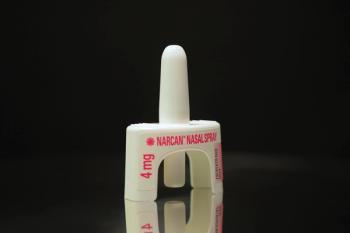
Clinical Twisters: Attaining pain relief for PHN
A 70-year-old man, P.A., is seen in your ER with burning, stabbing, shooting pain on his lower back. He has recently had shingles; the emergency physician diagnoses his current discomfort as postherpetic neuralgia (PHN). The physician is debating what to prescribe and asks your opinion. You note from the patient's history that P.A. also takes donepezil (Aricept, Eisai) 10 mg, digoxin .125 mg, and benazapril 20 mg daily. What do you recommend?
A 70-year-old man, P.A., is seen in your ER with burning, stabbing, shooting pain on his lower back. He has recently had shingles; the emergency physician diagnoses his current discomfort as postherpetic neuralgia (PHN). The physician is debating what to prescribe and asks your opinion. You note from the patient's history that P.A. also takes donepezil (Aricept, Eisai) 10 mg, digoxin .125 mg, and benazapril 20 mg daily. What do you recommend?
This patient brings some issues to a fairly straightforward problem because he is 70 years old, with dementia and possibly heart failure of unknown severity. Also unknown are his renal and hepatic status.
Ideal medications for this condition include the tricyclic antidepressants (TCAs). These drugs unfortunately have anticholinergic effects that will exacerbate dementia, and, at this age, benign prostatic hypertrophy (BPH) would also be a concern. However, duloxetine (Cymbalta, Eli Lilly)-which works by a similar mechanism without the anticholinergic side effects-is now available and something to consider down the line.
Long-acting opioids naturally come to mind, especially considering this condition usually is chronic. Opioids are of some concern in an elderly demented person but may be necessary. A history would be useful here.
Treating PHN usually requires a multidrug approach. However, because of this patient's age and other medical conditions, in my opinion, a lidocaine patch would be the best initial choice assuming that the herpetic lesions have healed. I would also send him home with tramadol 50 mg every four hours p.r.n., if necessary, and then change the dose to a regular schedule.
Gary Manley, Pharm.D., BCPS, CGPAssociate Professor of Pharmacy PracticeUniversity of Southern NevadaHenderson, Nev.
Several drug classes could be used to treat PHN, including TCAs, anticonvulsants, topical anesthetics, and opioid analgesics. TCAs aren't recommended because of their anticholinergic effects, and P.A. is taking a cholinesterase inhibitor. P.A.'s pain is significant and requires a medication that will provide fast relief. Ask the patient/caregiver if they have used or have had problems with opiate analgesics in the past. I suggest starting a course of oxycodone/APAP 5/325, one tablet every six hours p.r.n. for pain.
I'd also start gabapentin concurrently, initiating therapy at 300 mg on the first day, then 300 mg twice daily on day two, and 300 mg three times daily on day three. The dose can then be titrated up to 1,800 mg daily to provide pain relief. At this time, discontinue the opioid and reevaluate P.A.'s pain. If pain relief isn't achieved, P.A. should consult with a pain specialist and/or his physician, who may consider initiating a long-acting narcotic if oxycodone/APAP was tolerated well. The patient/caregiver should be counseled on medication use with importance placed on pain assessment and on monitoring for worsening cognitive function.
Roy WoodUniversity of Florida Pharm.D. candidate,and David Jungst, Pharm.D. BCPSManager, Patient Care Services Sarasota Memorial Hospital Sarasota, Fla.
Newsletter
Pharmacy practice is always changing. Stay ahead of the curve with the Drug Topics newsletter and get the latest drug information, industry trends, and patient care tips.





















































































































































